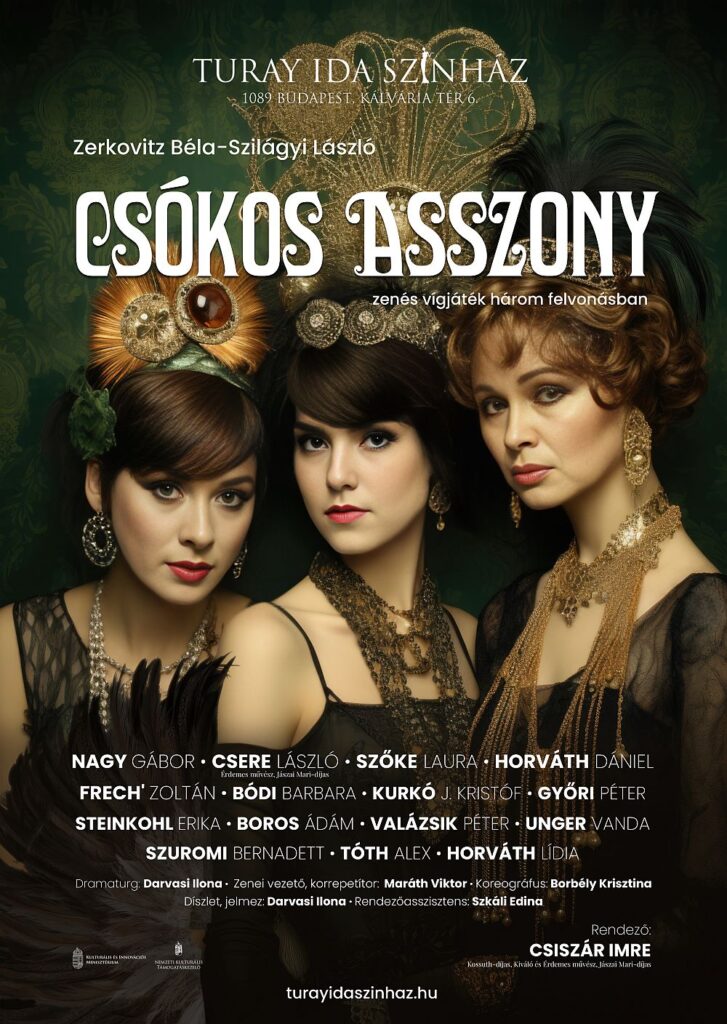Wonderful performances at Turay Ida Theater
This is an old post. Information may be outdated.

At the turn of the 19th and 20th centuries, Budapest and Vienna existed in a kind of cultural symbiosis.
The operetta was the child of this coexistence, capable of attracting a wide audience and serving as the bearer of mass culture in the best sense of the word.
In the pulsating heart of Budapest, in the area of today’s eighth district, the landscape was once characterized by suburban fields and sparse development. The rapid growth of Pest at the end of the 18th and the beginning of the 19th centuries brought with it the gradual development of areas outside the city walls. It was at this time that the district later known as “Józsefváros” began to take shape, in parallel with the birth and early successes of a new, lighter musical genre, the Hungarian operetta.
“Józsefváros” developed rapidly in the 19th century. Elegant palaces, tenement houses, and public buildings were erected along Kerepesi Road. The district soon became one of the most populous and vibrant parts of Pest. The National Museum, the building of Hungarian Radio, numerous schools, hospitals, and churches were built here. The district provided homes for a wide variety of residents: burghers, merchants, artisans, but the poorer strata also found housing here in the tenement barracks.
As “Józsefváros” took shape and developed, the operetta also began to evolve. The light, entertaining stories, the catchy melodies, and the spectacular stage elements quickly captivated the audience.
In the 1860s and 1870s, composers such as Ferenc Erkel’s son, Elek Erkel, as well as Károly Suppán and authors who can be considered Hungarian followers of Offenbach, appeared. These early Hungarian operettas still closely resembled their Viennese and French predecessors, but gradually, Hungarian elements began to appear in the music and the libretto.
The true golden age of Hungarian operetta arrived at the turn of the 19th and 20th centuries. It was then that composers such as Ferenc Lehár, Imre Kálmán, Jenő Huszka, and Béla Zerkovitz created lasting works. Their operettas achieved tremendous success not only in Hungary but worldwide.
“Józsefváros” also played a role in the early popularization of the genre. Smaller theaters and music halls operating in the district often staged performances of early Hungarian operettas, thereby contributing to the wider spread of the genre.
By the end of the 19th century, “Józsefváros” had become one of the most colorful and contradictory districts of Budapest. Alongside the luxurious palaces and bustling commercial life, poverty and social problems were also present. The district provided a home for many different cultures and entertainment options, so the early Hungarian operetta also found its audience here.
The operetta still lives on in “Józsefváros”; the artists of the theater bearing the name of actress Ida Turay worthily represent the legacy of the great operetta stars of the 20th century. The great predecessors Sári Fedák, Lujza Blaha, and Márton Rátkai would still be satisfied with the performance of their successors today. Although it may be difficult for tourists to enjoy a play performed in another language, the repertoire of the Ida Turay Theater includes numerous musical pieces that excellently reflect the atmosphere created by Hungarian operetta.
The currently playing operetta “Csókos Asszony” (Kissing Cousin) is an excellent example of how even tourists can enjoy the wonderful world of Hungarian operetta; the captivating music, acting, and magnificent dance scenes provide a special experience even if you don’t understand the language.
It is hoped that a significant portion of the cast will also become known to the wider public, and through their performances, the names of Gábor Nagy, Barbara Bódi, and J. Kristóf Kurkó will also become well-known.
One thing is certain: the theater’s audience awaits their next series of fabulously wonderful performances.